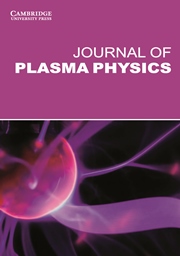No CrossRef data available.
Article contents
Internal waves and Rayleigh–Taylor instability in magnetized compressible strongly coupled dusty plasmas
Published online by Cambridge University Press: 02 October 2024
Abstract
This paper investigates the influence of compressibility on the internal wave modes and the density gradient-driven Rayleigh–Taylor (R–T) instability in magnetized strongly coupled dusty plasmas. The dusty magnetohydrodynamic model is formulated for compressible fluids, accounting for the effects of weakly coupled electrons/ions and strongly coupled dust particles under the influence of the gravitational field. The effect of the magnetic field on the dust dynamics has been incorporated through the magnetic force on the electrons and ions in quasineutral dusty plasmas. A dispersion relation of the R–T instability has been derived which has been modified because of the compressibility effect, dust acoustic wave speed and viscoelastic coefficients. The shear Alfvén and compressional viscoelastic wave modes become coupled in the dispersion characteristics. The modified R–T instability criterion is derived in terms of the Alfvén speed, viscoelastic effects and dust grain parameters. The graphical illustrations show that the growth rate of R–T instability has been suppressed due to compressibility, viscoelastic coefficients and dust acoustic speed. The results are useful to discuss the development of R–T instability in magnetized astrophysical dusty plasmas.
- Type
- Research Article
- Information
- Copyright
- Copyright © The Author(s), 2024. Published by Cambridge University Press



